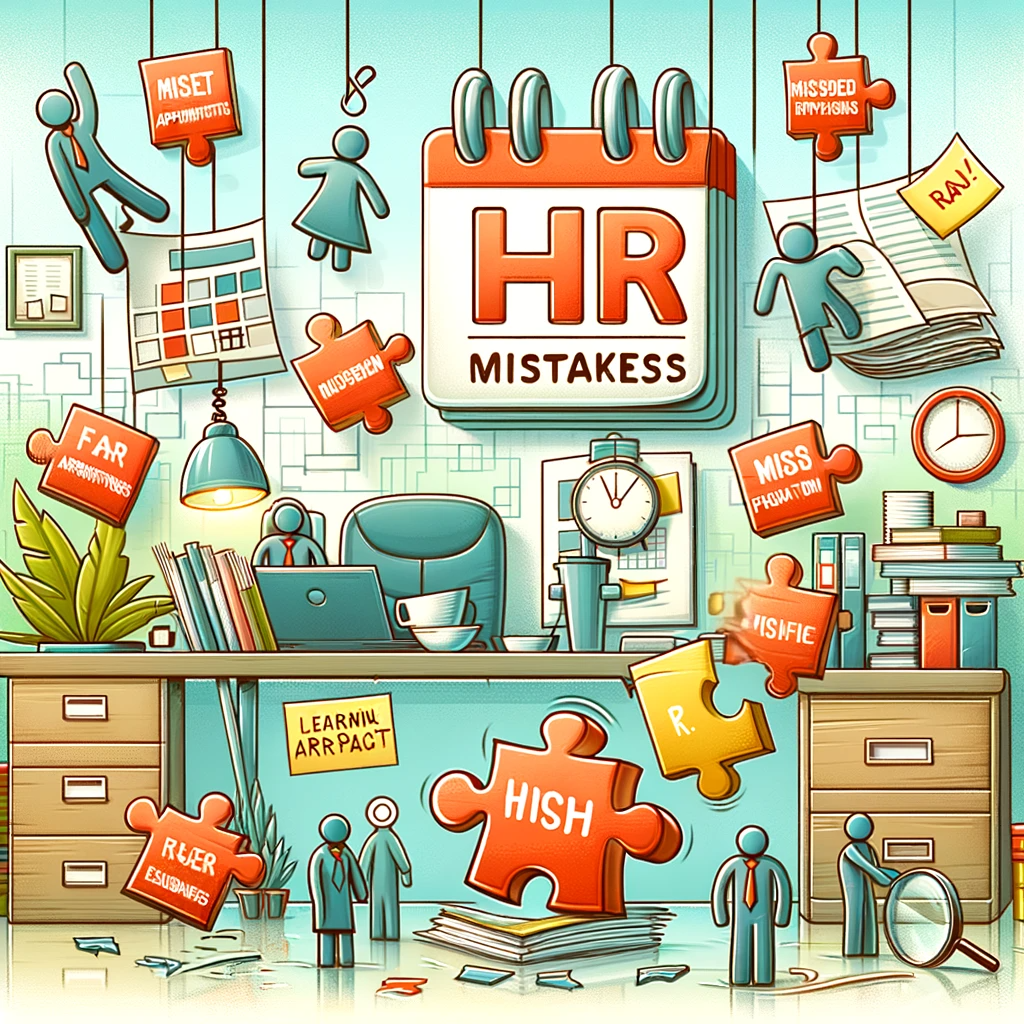The Human Resources (HR) department plays an essential role in personnel management and the overall success of an organization. However, like in any area of work, mistakes can occur and have a significant impact on productivity, employee morale, and company effectiveness. In this article, we will explore some of the main mistakes that HR departments can make and provide strategies to avoid them and improve personnel management.
I. Introduction
The Human Resources (HR) department plays an essential role in personnel management and the overall success of an organization. However, like in any area of work, mistakes can occur and have a significant impact on productivity, employee morale, and company effectiveness. In this article, we will explore some of the main mistakes that HR departments can make and provide strategies to avoid them and improve personnel management.
II. Main Mistakes in the Human Resources Department
1.- Inefficient Selection Process
A common mistake is not having an efficient selection process. This can lead to hiring unqualified employees or losing talented candidates due to a slow or complicated process.
Solution: Implement a structured and efficient selection process that includes clear definition of job requirements, objective candidate assessment, and transparent communication with applicants.
2.- Lack of Training and Development
Failing to invest in employee training and development can result in an outdated and demotivated workforce. Lack of growth opportunities can also lead to employee turnover.
Solution: Implement training and development programs that cater to the needs of employees and provide opportunities for professional growth.
3.- Poor Communication
Inadequate communication within the HR department and among employees can lead to misunderstandings, conflicts, and a lack of alignment with organizational goals.
Solution: Foster open and transparent communication within the department and establish clear communication channels for employees.
4.- Lack of Succession Planning
Not having a succession plan in place can leave the organization vulnerable when key leaders retire or leave the company.
Solution: Develop succession plans that identify and prepare employees with potential to assume leadership roles.
5.- Inefficient Benefits Administration
Inefficient benefits management can result in unnecessary costs and dissatisfied employees.
Solution: Implement efficient systems and processes to administer benefits, in addition to providing clear communication about available benefits.
6.- Lack of Diversity and Inclusion
Failure to promote diversity and inclusion in the workplace can limit innovation and lead to discrimination issues.
Solution: Implement policies and programs that promote diversity and inclusion in all aspects of the company.
7.- Inadequate Performance Management
Not effectively addressing underperformance can negatively impact the team and employee morale.
Solution: Establish a performance management process that includes clear goals, regular feedback, and improvement plans.
8.- Non-compliance with Labor Regulations
Failure to comply with labor regulations can expose the organization to legal sanctions and damage its reputation.
Solution: Stay informed about relevant labor laws and ensure that HR processes comply with all regulations.
9.- Ignoring Employee Mental Health
Not paying attention to employee mental health can lead to increased stress, anxiety, and burnout.
Solution: Implement wellness programs and provide support to employees facing mental health challenges.
10.- Failure to Measure HR Impact
Not measuring the impact of HR initiatives can make it difficult to evaluate their effectiveness and contribution to organizational goals.
Solution: Establish metrics and KPIs to assess the impact of HR activities and regularly track results for continuous improvement.
III. Strategies to Avoid HR Errors
Preventing HR errors is essential to ensure effective departmental functioning and employee well-being. Here are some key strategies to avoid these errors:
1.- Establish Structured Processes
Implement structured and standardized processes for selection, development, communication, and benefits administration. This helps ensure consistency and efficiency in all HR activities.
2.- Invest in Training and Development
Allocate resources for employee and leadership training and development. Investing in workforce growth often yields significant returns in the form of more skilled and engaged employees.
3.- Foster Communication
Promote open and effective communication within the HR department and throughout the organization. This includes providing channels for employees to express their concerns and feedback.
4.- Succession Planning
Develop robust succession plans that identify and prepare internal leaders for key roles. This ensures a smooth transition when leadership changes occur.
5.- Improve Benefits Administration
Implement efficient benefits management systems and provide clear information to employees about their benefit options.
6.- Promote Diversity and Inclusion
Develop policies and programs that foster diversity and inclusion in the workplace, creating an environment where all employees feel valued and respected.
7.- Effective Performance Management
Establish a performance management process that includes goal setting, regular feedback, and development plans for employees.
8.- Regulatory Compliance
Stay up-to-date on relevant labor laws and ensure that all HR processes comply with regulations.
9.- Prioritize Mental Health
Promote a work environment that fosters mental health and provide support to employees facing mental health challenges.
10.- Measure Impact
Establish metrics and KPIs to evaluate the impact of HR activities and regularly track results for continuous improvement.
IV. Conclusions
Human resources management plays a critical role in an organization’s success and employee satisfaction. Avoiding common HR mistakes is essential to ensuring a healthy and efficient work environment. By implementing structured processes, investing in employee development, fostering communication, and promoting diversity and inclusion, organizations can improve personnel management and achieve greater success in today’s labor market. Attention to detail and a commitment to continuous improvement are key to avoiding HR errors and building a highly effective, results-oriented HR team.
If you want to know how BLMHRM can help you reduce errors in your Human Resources department, you can contact us.

